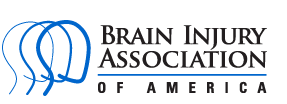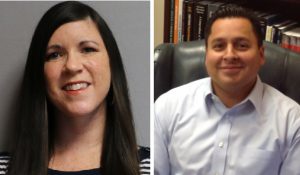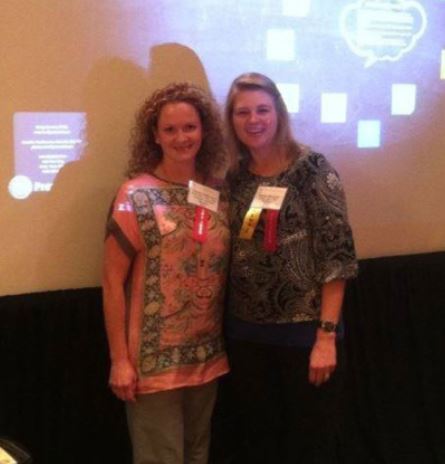Pate has its own in-house research department and its brain injury research publications have appeared in many peer-reviewed journals. Our research is part of our commitment to promote the best possible outcomes and quality of life for people affected by brain injury.
We collaborate in research projects with nationally recognized institutions, including:
• University of Texas at Dallas, Center for Brain Health
• University of Texas at Arlington
• University of Texas Southwestern Medical Center
Pate professionals frequently contribute to top tier research publications and present their findings at national conferences.
2020
Dahdah, D., Bennett, M., Prajapati, P., Parsons, T., Sullivan E. Driver, S., & Salisbury, D. (2020). The impact of virtual reality on executive functioning training and the association with neurorehabilitation outcomes. International Journal of Rehabilitation, 7(3).
Hreha, K., Weden, K, Perea, J., Roberts, P, & Rizzo, J. R. (2020). A model for vision rehabilitation and the role of the physiatrist on the interdisciplinary team. American Journal of Physical Medicine & Rehabilitation. doi:10.1097/PHM.0000000000001544.
Perna R, & Harik L. The role of rehabilitation psychology in stroke care described through case examples. NeuroRehabilitation. 2020;46(2):195‐204.
Pundlik J, Perna R, & Arenivas A. (2020). Mild TBI in interdisciplinary neurorehabilitation: Treatment challenges and insights. Neurorehabilitation, 227-241.
Perea, J., & Sit, W. (2020). Comparing learning platform impact on low vision education for occupational
therapists. The Open Journal of Occupational Therapy, 8(1), 1-10. https://doi.org/10.15453/2168-6408.1619
2019
Burns, S. P., Dawson, D. R., Perea, J. D., Vas, A., & Pickens, N.D., Neville, M. (2019). Development, Reliability, and Validity of the Multiple Errands Test Home Version (MET-Home) in Adults with Stroke. American Journal of Occupational Therapy, 73(3).
Burns, S. P., Dawson, D. R., Perea, J. D., Vas, A., Pickens, N., Marquez de la Plata, C., & Neville, M. (2019). Associations between self-generated strategy use and MET-Home performance in adults with stroke. Neuropsychological Rehabilitation. doi 10.1080/09602011.2019.1601112
Perea, J., & Anise, M. (2019). Beyond cueing to the left and a red line: Treatment methods for homonymous hemianopia. SIS Quarterly Practice Connections, 4(2), 28-30.
Poster, American Congress of Rehabilitation Medicine (ACRM) Annual Conference, 2019
Comparing the Impact of Learning Platform on Low Vision Continuing Education for Clinical Practitioners
Primary Author: Jaimee Perea, OTR, OTD, CLVT, CBIS
Coauthors: Mary Anise, Psy.D.
Poster, American Congress of Rehabilitation Medicine (ACRM) Annual Conference, 2019
Evidence-Based Interventions for Homonymous Hemianopia (HH): A Clinical Case Example
Primary Author: Jaimee Perea, OTR, OTD, CLVT, CBIS
Coauthors: Mary Anise, Psy.D.
2018
Poster, American Psychological Association Division 22 Annual Meeting, February 2018, Dallas, TX
Effectiveness of post-acute interdisciplinary comprehensive rehabilitation in those with acquired brain injury
Primary Author: Jeffrey Schaffert
Coauthors: Jeanine Galusha, Carlos Marquez de la Plata
Poster, American Psychological Association Division 22 Annual Meeting, February 2018, Dallas, TX
Biofeedback Cotreatment Addressing Foot Drop of Stroke Survivors
Primary Author: J. Downum
Coauthors: J. Yeager, A. Johnson, K. McWilliams, C. Marquez de la Plata
Poster, American Psychological Association Division 22 Annual Meeting, February 2018, Dallas, TX
Driving Outcomes Following Post-acute Stroke Rehabilitation
Primary Author: C. Lighthill
Coauthors: C. Nelson, J. Woods, P. Salinas, Carlos Marquez de la Plata
To examine the effectiveness of Pate’s comprehensive interdisciplinary brain injury rehabilitation programming aimed toward assisting patients’ return to driving goals.
Poster, American Psychological Association Division 22 Annual Meeting, February 2018, Dallas, TX
Return to Work Outcomes After Post-Acute Rehab Following Stroke and Traumatic Brain Injury
Primary Author: Gail Darden
Coauthors: Paige Salinas, Jessica Woods, Jeanine M. Galusha, Carlos Marquez de la Plata
Evaluates the rate of return to work following comprehensive interdisciplinary post-acute rehabilitation programming for patients with stroke (CVA) and traumatic brain injury (TBI).
Dahdah, M., Bennett, M., Prajapati, P., Parsons, T., Sullivan, E., Driver, S., Salisbury, D. (2018). The Impact of Virtual Reality on Executive Functioning Training and Association With Neurorehabilitation Outcomes. Upcoming symposium at 4th Annual Federal Interagency Conference on Traumatic Brain injury, Washington, D.C.
2017
 Matthew A. Warner, Carlos Marquez de la Plata, David S. Liebeskind, and Ramon Diaz-Arrastia
Matthew A. Warner, Carlos Marquez de la Plata, David S. Liebeskind, and Ramon Diaz-Arrastia
Imaging Assessment of Brain Injury, Neuroprotection in Critical Care and Perioperative Medicine, October 2017
![]()
American Congress of Rehabilitation Medicine's 94th Annual Conference in Atlanta, October 2017.

Pate neuropsychologist and research director Dr. Carlos Marquez de la Plata presentation of a collaborative project with individuals from Brown University, ABI in New Zealand, and NYU: Community Reintegration in Low-Resource Settings: Unmet Needs and Family Participation in Rehabilitation Process.
Paige Salinas, LCSW, CBIS (Program Manager), Jennifer Featherston, PhD, LPC, CRC, CVE, EAGALA Certified - (Vocational Rehabilitation Counselor), Carlos Marquez de la Plata, PhD - (Director of Rehabilitation Research) presentation: Patient-Centered Vocational Rehabilitation for Individuals With Acquired Brain Injuries.
Learning Objectives
- List cognitive and functional deficits that commonly impact employment outcomes of patients with acquired brain injury that can be improved with vocational rehabilitation services.
- Identify three key components of client-centered practice and how to implement these practices when working with patients vocational goals.
- Discuss outcomes of vocational rehabilitation services for individuals with acquired brain injury.
 Marquez de la Plata, C., Qualls, D., Plenger, P., Malec, J., Hayden, M. (2017). Ecologically Relevant Outcome Measure for Post-Inpatient Rehabilitation. Neurorehabilitation, doi: 10.3233/NRE-161403
Marquez de la Plata, C., Qualls, D., Plenger, P., Malec, J., Hayden, M. (2017). Ecologically Relevant Outcome Measure for Post-Inpatient Rehabilitation. Neurorehabilitation, doi: 10.3233/NRE-161403
CONCLUSIONS: The PERPOS can be used reliably in PBIR to quantify patients’ functional abilities within the context of environmental demands.
Read paper published in Neurorehabilitation, pre-review copy: PERPOS
 Cioe, N., Seale, G., Marquez de la Plata, C., Groff, A., Gutierrez, D., Ashley, M., Connors, S. (2017). Brain Injury Rehabilitation Outcomes: A Position Paper of the Brain Injury Association of America. http://www.biausa.org/biaa-position-papers.htm
Cioe, N., Seale, G., Marquez de la Plata, C., Groff, A., Gutierrez, D., Ashley, M., Connors, S. (2017). Brain Injury Rehabilitation Outcomes: A Position Paper of the Brain Injury Association of America. http://www.biausa.org/biaa-position-papers.htm
![]() Yeager, Jessica, Yeager, Jenna, Marquez de la Plata, C., Tape Gait Training Impacts Walking After Stroke. Poster presented at the International Brain Injury Association World Congress in New Orleans, May 2017.
Yeager, Jessica, Yeager, Jenna, Marquez de la Plata, C., Tape Gait Training Impacts Walking After Stroke. Poster presented at the International Brain Injury Association World Congress in New Orleans, May 2017.
Marquez de la Plata, C. Rehabilitation Following Brain Injury: The Rehab Continuum from Coma to Community. Oral Presentation at the 17th Annual Christus St. Michael Rehabilitation Conference in Texarkana, Texas on February 18, 2017.
2016
 Salinas, P., Neimeier, J., Marquez de la Plata, C. (2016). Culturally Effective Goal Setting with Patients and Families in Brain Injury Rehabilitation. Oral Presentation at the American Psychological Association annual meeting, August 4, 2016 in Denver, Colorado.
Salinas, P., Neimeier, J., Marquez de la Plata, C. (2016). Culturally Effective Goal Setting with Patients and Families in Brain Injury Rehabilitation. Oral Presentation at the American Psychological Association annual meeting, August 4, 2016 in Denver, Colorado.
![]() Relevance: This presentation reviewed the literature showing disparities in neurorehabilitation outcomes among certain cultural groups, and outlines an effective treatment approach (i.e., Client-Centered Therapy) to help patient’s meet their rehabilitation goals despite their cultural differences. The active ingredients in Client-Centered Therapy as it relates to neurorehabilitation were discussed in detail, and examples of how to become client-centered were provided.
Relevance: This presentation reviewed the literature showing disparities in neurorehabilitation outcomes among certain cultural groups, and outlines an effective treatment approach (i.e., Client-Centered Therapy) to help patient’s meet their rehabilitation goals despite their cultural differences. The active ingredients in Client-Centered Therapy as it relates to neurorehabilitation were discussed in detail, and examples of how to become client-centered were provided.
 Plenger, P., Krishnan, K., Cloud, M., Bosworth, C., Qualls, D., Marquez de la Plata, C. (2016). fNIRS-based Investigation of the Stroop Task after TBI. Brain Imaging & Behavior, 10, 357-366.
Plenger, P., Krishnan, K., Cloud, M., Bosworth, C., Qualls, D., Marquez de la Plata, C. (2016). fNIRS-based Investigation of the Stroop Task after TBI. Brain Imaging & Behavior, 10, 357-366.
Lequerica, A.H., Vega, M., Belen, K., Salinas, C. M., Marquez de la Plata, C., Pappadis, M. R., Santos, O. A., & Arango Lasprilla, J. C. (2016). Estado Actual de la Rehabilitación Cognitiva en Personas de Habla Hispana en los Estados Unidos. Revista Neuropsicología, Neuropsiquiatría y Neurociencias, 16, 51-68.
2015
 Featherston, J., & Harstad, E. (2015 November). The OT's Role in Vocational Rehabilitation. Poster presented at the Texas Occupational Therapy Association Conference, Richardson, TX.
Featherston, J., & Harstad, E. (2015 November). The OT's Role in Vocational Rehabilitation. Poster presented at the Texas Occupational Therapy Association Conference, Richardson, TX.
McWilliams, K. (2015, November). Driving and Self-Efficacy for Individuals with Traumatic Brain Injuries. Poster presented at the Texas Occupational Therapy Association Conference, Richardson, TX.
Marquez de la Plata, C., Morgan, L., & Qualls, D. (2015, October). Reliability and Validity of the PERPOS for Post-Acute Brain Injury Rehabilitation. Poster presented at the 92nd Annual Conference of the American Congress of Rehabilitation Medicine, Dallas, TX.
This paper demonstrates PERPOS can be used with a significant degree of confidence by rehabilitation professionals of different disciplines to rate a patient's level of functioning. The most novel aspect of this tool is that it can be used to rate the amount of structure and distractions present in the environment in which the patient can function best. This feature allows the tool to be used to help patients transfer skills learned in the clinic into their home or work environments.
This article examined the reliability of this rating tool with patients who experienced strokes and those who experienced traumatic brain injuries, and found scores on this instrument are strongly associated with improvements in a measure of cognitive and physical abilities, and community participation. These results suggest the PERPOS can be used to identify and manipulate important environmental factors to facilitate the patient’s return to pre-injury abilities and environments (i.e., work, school, community, etc.)
Vega, M., Saldivar, A., & Marquez de la Plata, C. (2015, October). Addressing Disparities in Neurorehabilitation: A Framework for Cultural and Linguistic Competence in Treatment and Research. Symposium presented at the 92nd Annual Conference of the American Congress of Rehabilitation Medicine, Dallas, TX.
Relevance: This presentation reviewed the literature showing disparities in brain injury prevalence, severity, and rehabilitation outcomes for certain cultural groups, including ethnic minorities and individuals who speak a different language. Additionally, recommendations were provided on how health care providers and health care organizations can become more culturally and linguistically competent.
Vega, M., Sera, H., Holland, D., Cardoso, E., Qualls, D. & Marquez de la Plata, C. (2015 October). Perceptions of Multicultural Competency Among Psychologists Who Serve People with Disabilities. Poster presented at the 92nd Annual Conference of the American Congress of Rehabilitation Medicine, Dallas, TX.
Oden, K., Barker, R., & Marquez de la Plata, C., (2015, October). Bariatric‐Surgery Related Malnutrition and Memory Issues: A New Non‐Alcoholic Korsakoff's Syndrome? Poster presented at the 92nd Annual Conference of the American Congress of Rehabilitation Medicine, Dallas, TX.
Downum, Jana. (2015, September). Clinical Report for the Use of Biofeedback with Brain Injury Survivors. Poster presented at the Annual Conference of the Biofeedback Society of Texas, Houston, TX.
Kulkarni, A., Marquez de la Plata, C., Qualls, D., & Plenger, P. (2015, February). Frontal Lobe Inefficiency after TBI Detected using fNIRS during Stroop Task. Poster presented at the 2015 International Neuropsychological Society Annual Meeting, Denver, CO.
Marquez de la Plata, C., Morgan, L., Hayden, M.E., Qualls, D., & Plenger, P. (2015 February). Psychometric Properties of an Ecologically Relevant PABIR Outcome Measure. Oral presentation at the Santa Clara Valley Brain Injury Conference, Santa Clara, CA.
Marquez de la Plata, C. (2015). Timeliness of Post-Acute Brain Injury Rehabilitation after TBI Improves Outcome. The Challenge, Brain Injury Association of America, 9 (2)10-12.
"Within days after injury, the brain begins the process of repairing itself and this process continues for several months. Research shows that patients achieve the best outcomes when they receive guidance in a rehabilitative setting during this time..."
Marquez de la Plata, C., Bison, K., Hayden, M.E., & Qualls, D., & Plenger, P. (2015 January). Timeliness of PABIR Impacts Functional Outcome After TBI. Poster presented, Brain Injury Summit, Vail, CO.
Marquez de la Plata, C., Cloud, M., Downum, J., & Plenger, P. (2015, January). Left Hemisphere Stroke Related Changes During Confrontation Naming: A Functional Near Infrared Spectroscopy Analysis. Poster presented at The Brain Injury Summit, Vail, CO.
Plenger, P., Krishnan, K., Cloud, M., Bosworth, C., Qualls, D., & Marquez de la Plata, C. (2015). fNIRS-Based Investigation of the Stroop Task After TBI. Brain Imaging & Behavior, 10, 357-366.
Relevance: This initial study examined patients undergoing brain injury rehabilitation to determine whether fNIRS, a technological advance that allows one to detect increased brain activity to areas of the brain during a task, can detect brain impairment as a result of traumatic brain injury (TBI). As expected, the results suggest fNIRS can indeed identify inefficiency in the frontal brain regions after TBI. Future studies with this technology will examine whether improvement in cognitive and/or functional abilities as a result of rehabilitation can be detected.
Saldivar, A., González, F., Vega, M., & Sykora, C. (2015). Language, Ethnicity, Culture and the Neurorehabilitation Patient Experience. In Uomoto, J. M. (Ed.), Multicultural Neurorehabilitation: Clinical Principles for Rehabilitation Professionals. New York, NY: Springer.
2014
Vega, M., González, F., & Smith, J. (2014, November). Caregiver Burden After Traumatic Brain Injury and Dementia. Oral presentation at the 61st Annual Convention of the Puerto Rico Psychological Association, Río Grande, Puerto Rico.
Vos, P., Marquez de la Plata, C., & Diaz-Arrastia, R. (2014). Neuroimaging in Traumatic Brain Imaging. In Vos, P. & Diaz-Arrastia, R.(Eds), Traumatic Brain Injury (13-44). Chichester, UK: John Wiley & Sons, Ltd.
Perez, A.M., Adler, J., Kulkarni, N., Strain, J.F., Womack, K.B., Diaz-Arrastia, R., & Marquez de la Plata, C. (2014, September). Longitudinal White Matter Changes After Traumatic Axonal Injury. Journal of Neurotrauma. 31(17):1478-85
Hudak, A.M., Peng, L., Marquez de la Plata, C., Thottakara, J., Moore, C., Harper, C., McColl, R., Babcock, E., & Diaz-Arrastia, R.(2014, July). Cytotoxic and Vasogenic Cerebral Oedema in Traumatic Brain Injury: Assessment with FLAIR and DWI Imaging. Brain Injury. 28(12):1602-9.
Belen, K.E. (2014, May). Using Language and Culture as Tools to Improve Outcome After Brain Injury. 38th Annual Williamsburg Conference; Brain Injury Rehabilitation: Practical Solutions to Real World Problems. Williamsburg, VA.
2013
Belen, K.E. (2013, October). Using Language and Culture as Tools to Reduce Cost and Improve Outcome Following Brain Injury. Poster presented at Paradigm Summit West. San Diego, CA.
Judd, T., Cruz-Laureano, D., Belen, K., Masten Hoese, V., Pineda, A., Radosteva, & A. (2013, October). Ethics and Models of Neuropsychological Assessment of Non-English Speakers. Poster presented at the National Academy of Neuropsychology Annual Conference. San Diego, CA.
Brenske, S., Stewart, D., Capriotti, C. (2013, May). Don’t Walk Next to Me: A Simple Procedure to Improve Ambulation of an Adult with a Brain Injury. Poster presented at the 39th Annual International Convention of the Association for Behavior Analysis, Minneapolis, MN.
Capriotti, C., Capriotti, M., & Brenske, S. (2013, May). Use of Precision Teaching Methodology in the Rehabilitation of a Bilingual Male with a Brain Injury. Poster presented at the 39th Annual International Convention of the Association for Behavior Analysis, Minneapolis, MN.
Hayden, M.E., Plenger, P., Bison, K., Kowalske, K., Masel, B., & Qualls, D. (2013, April). Treatment Effect Versus Pretreatment Recovery in Persons With Traumatic Brain Injury: A Study Regarding the Effectiveness of Post acute Rehabilitation. PM&R, 5.(4):319-27.
Graybill, A., & Morgan, L. (2013, March ). Aphasia Treatment: From the Clinic to the Community. ADVANCE for Speech-Language Pathologists & Audiologists.
Bison, K., & Tsaousides, T. (2013, February). Families Need Treatment Too: Best Practices and Interventions. Presented at the Rehabilitation Psychology 15th Annual Conference, Jacksonville, FL.
Plenger, P., & Cloud, M. (2013). Thinking Inside the Box. Imaging Technology Offers New Insights into Traumatic Brain Injury. Brain World, 4(2).
Zgaljardic, D.J., Oden, K.E., Dickson, S., Plenger, P.M., Lambert, M.E., & Miller, R. (2013). Naming Test of the Neuropsychological Assessment Battery: Reliability and Validity in a Sample of Patients with Acquired Brain Injury. Archives of Clinical Neuropsychology, 28(8), 859-65.
2012
Atkins, R., Troegle, C. (2012). Walking With PERPOS. Gait analysis is critical to functional recovery in post-acute brain injury rehabilitation. ADVANCE for Physical Therapy & Rehab Medicine, 23(24), 15.
Bison, K., Dickson, S., & Qualls, D. (2012 September). A Theoretical Model for Outcome Prediction in Post-Acute TBI Rehabilitation. Poster presented at the NABIS Tenth Annual Conference on Brain Injury, Miami, FL.
Bison, K. (2012). PERPOS Shatters the Plateau Myth. The Challenge, 6(3), 21.
Ward, N. (2012, October). Acquired Brain Injury. Rehabilitation nurses working with this patient population are typically the medical support arms of multidisciplinary care teams. ADVANCE for Nurses.
Cloud, M., Downum, J., Liu, H., & Plenger, P. (2012, September). Assessing Vulnerability to Distraction Following Traumatic Brain Injury using Functional Near-Infrared Spectroscopy. Poster presented at the NABIS Tenth Annual Conference on Brain Injury, Miami, FL.
Davie, C. (2012, June). Supported Living for Persons With Brain Injury: Addressing an Aging Population. Long-Term Living.
Cloud, M., Plenger, P., Downum, J., & Liu, H. (2012, June). Left Hemisphere Biomarkers of Aphasic Recovery from Cerebral Vascular Accident Using Functional Near-Infrared Spectroscopy. Poster presented at 2012 Biomedical Optical Engineers Texas Symposium, College Station, TX.
Bison, K. (2012, February). Factors Associated with Response to Post-Acute Brain Injury Rehabilitation Following Severe Traumatic Brain Injury. Poster presented at the 14th Annual Rehabilitation Psychology Conference, Fort Worth, TX.
Dickson, S. (2012, February). Changes in Brain Activity Associated with Treatment and Recovery of Aphasia: A Functional Near Infrared Spectroscopy (fNIRS) Study. Poster presented at Santa Clara Valley Brain Injury Conference, San Jose, CA.
Dickson, S. (2012, January). The Relationship of an Environmentally-Based Outcome Measurement System with the Mayo-Portland Adaptability Inventory-4. Poster presented at the 2012 Brain Injury Summit: A Meeting of the Minds, Beaver Creek, CO.
Haddock, P. (2012). Confidence Gain. Water is a Welcome Sight for Many Patients with Acquired Brain Injuries. ADVANCE for Physical Therapy & Rehab Medicine, 23(16), 28.
Schoel, C. (2012). Finding the Right Balance. Blending Vestibular Rehabilitation Therapy with the Supportive Structure of Caregivers and Families Guides Acquired Brain Injury Patients to Recovery. Rehab Management, 25(9), 22-25.
Hayden, M.E., Moreault, A.M., LeBlanc, J., & Plenger, P. (2000). Reducing Level of Handicap in Traumatic Brain Injury: an Environmentally Based Model of Treatment. Journal of Head Trauma Rehabilitation.15(4), 1000-1021.
Kowalske, K., Plenger, P., Lusby, B., & Hayden, M.E. (2000). Vocational Reentry Following TBI: an Enablement Model. Journal of Head Trauma Rehabilitation, 15(4), 989-999.
LeBlanc, J., Hayden, M.E. (2000). Issue editors for special issue on Ecological Validity in Traumatic Brain Injury. Journal of Head Trauma Rehabilitation. 15(4).
LeBlanc, J. M., Hayden, M.E., & Paulman, R.G. (2000). A Comparison of Neuropsychological and Situational Assessment for Predicting Employability After Closed Head Injury. Journal of Head Trauma Rehabilitation. 15(4), 1022-1040.
Hayden, M.E. (1997). Mild Traumatic Brain Injury: A Primer for Understanding its Impact on Employee Return to Work. AAOHN Journal. 45(12), 635-645.
Hart, T., Hayden, M.E., & McDowell, J. (1988). Rehabilitation of Severe Brain Injury: When You Stick to the Facts, You Cut the Losses. In Miner, M.E. & Wagner K.E. (Eds.), Neurotrauma: Treatment, Rehabilitation, and Related Issues, No 2. (139-47). Stoneham, MA: Butterworths.
Hart, T., & Hayden, M.E. (1986). The Ecological Validity of Neuropsychological Assessment and Remediation. In Uzzell, B.P & Gross, Y. (Eds.), Clinical Neuropsychology of Intervention, (21-50). Boston, MA: Martinus Nijhoff.
Hayden, M.E., & Hart, T. (1986). Rehabilitation of Cognitive and Behavioral Dysfunction in Head Injury. Advances is Psychosomatic Medicine, 16, 194-229.
